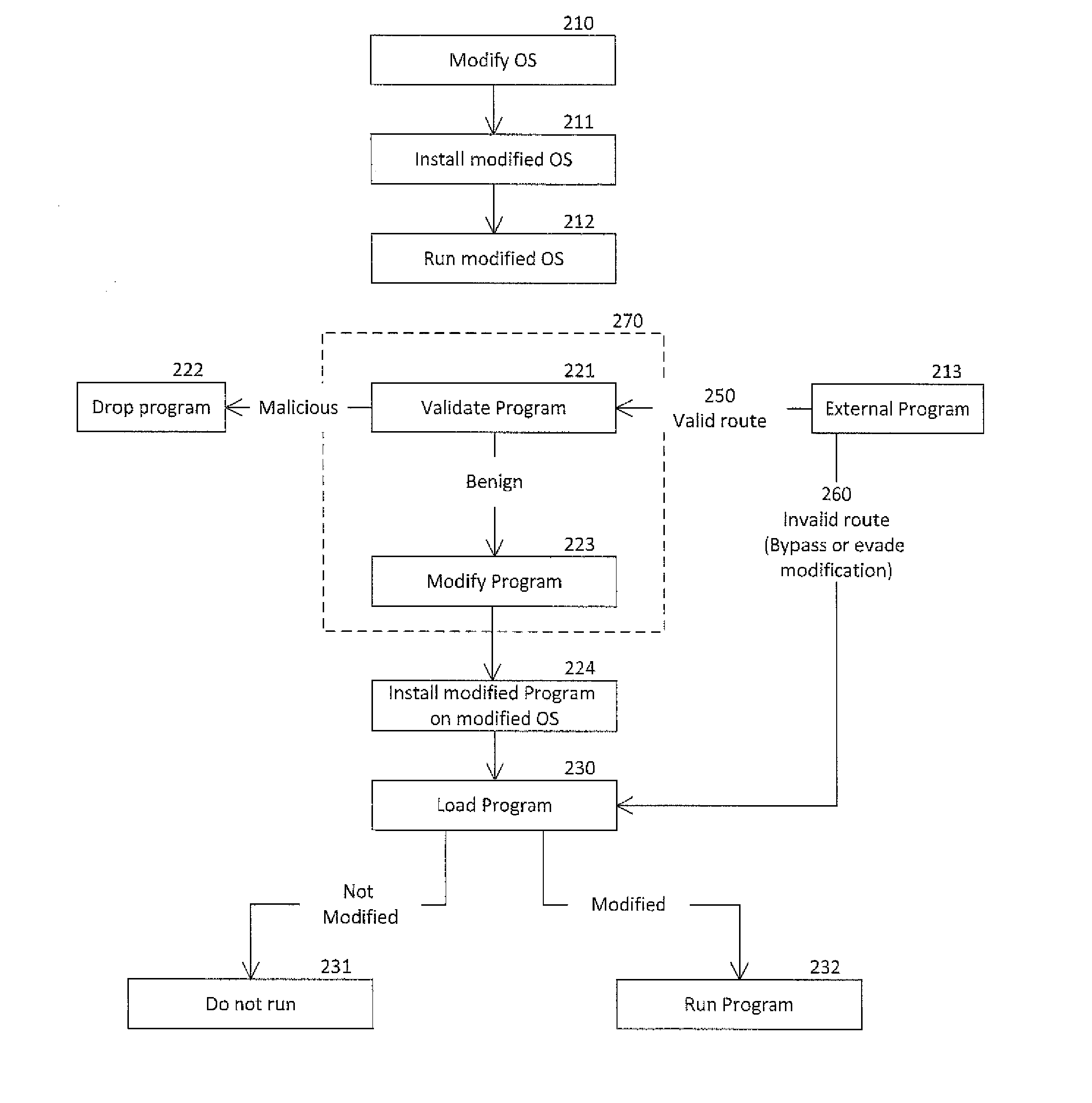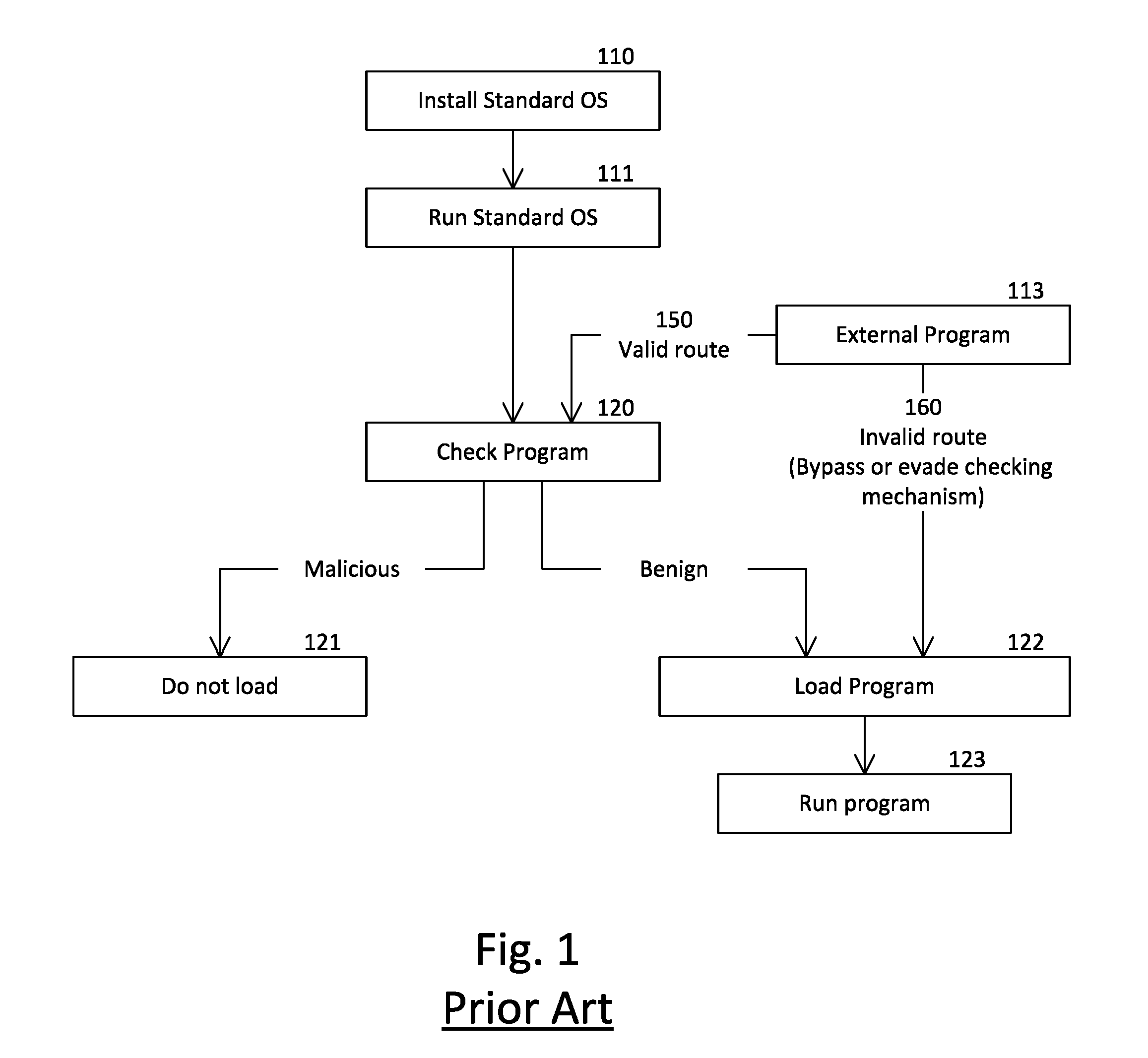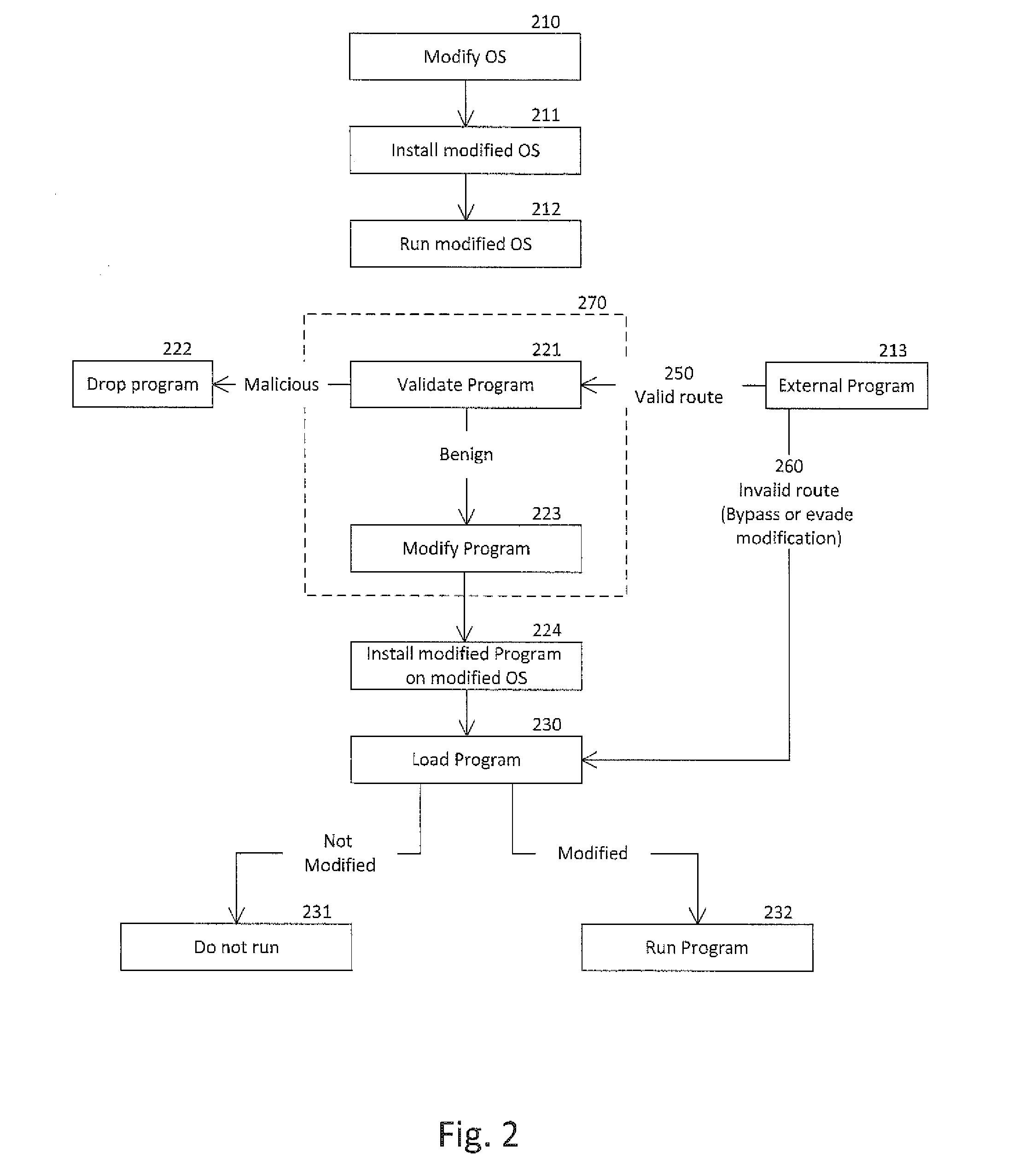Method and system for protecting computerized systems from malicious code
a computerized system and malicious code technology, applied in the field of information security, can solve problems such as affecting the detection of malicious code, and affecting the detection of malicious cod
- Summary
- Abstract
- Description
- Claims
- Application Information
AI Technical Summary
Benefits of technology
Problems solved by technology
Method used
Image
Examples
first embodiment
[0073]In the invention, said modification is made to the signatures for a given subset of the operating system (OS), i.e., “system calls”.
[0074]FIG. 3a illustrates a typical flow of a system call from its invocation 1101a at a user mode application, to its final implementation by a kernel mode service routing 1202a, in a conventional system, such as Linux. An application running at user mode 1100a initiates a system call invocation 1101a, passing the call in a form of the standard signature of this specific system call, to a wrapper routine 1102a which resides in a standard library such as LIBC or its equivalent. In this context which is well known, the term signature typically refers to a function name, the types, order, and number of its parameters, and the type of the function's return value. The wrapper routine 1102a (also known as library routine) may perform some additional operations, and then it passes the call to the system call handler 1201a at kernel mode 1200a. If the si...
second embodiment
[0080]According to the invention, the essential element which is modified is the dynamic linker of the operating system, and all the applications that access the dynamic linker are also modified to conform with said modification of the dynamic linker. FIG. 4a describes the typical manner by which an application accesses a dynamic library. In typical systems, the application 700a which needs to access a dynamic library 720a, uses the dynamic linker 710a which is provided by the operating system. The dynamic linker 710a loads the dynamic library 720a on behalf of the application 700a.
[0081]FIG. 4b describes the second embodiment of the present invention. According to the second embodiment, the name of the dynamic linker 710b is modified in a manner unknown to authors of external applications. Furthermore, all the applications are modified to conform to said name modification of the dynamic linker in order to operate normally. External applications that have not been properly modified...
fourth embodiment
[0084]FIG. 6 depicts the present invention, where modifications are made at the level of the instruction set. The standard numeric code of a given instruction 820 is replaced by a modified instruction code 810, in a manner unknown to authors of external programs. Consequently, any program which is intended to use the modified instruction-set should be modified accordingly. When a modified program 800 issues a modified instruction code 810, the processor goes on to execute the original instruction 820. On the other hand, when an unmodified program 801 issues the unmodified instruction code 811, the processor raises an exception 821, which indicates an illegal operation. The term ‘processor’ in this context may refer either to a physical hardware processor, or to a virtual processor implemented by a hypervisor.
[0085]The following fifth embodiment of the invention is described in terms of Java or similar bytecode, where either a Virtual Machine (VM) or a Just In Time (JIT) compiler is ...
PUM
 Login to View More
Login to View More Abstract
Description
Claims
Application Information
 Login to View More
Login to View More - R&D
- Intellectual Property
- Life Sciences
- Materials
- Tech Scout
- Unparalleled Data Quality
- Higher Quality Content
- 60% Fewer Hallucinations
Browse by: Latest US Patents, China's latest patents, Technical Efficacy Thesaurus, Application Domain, Technology Topic, Popular Technical Reports.
© 2025 PatSnap. All rights reserved.Legal|Privacy policy|Modern Slavery Act Transparency Statement|Sitemap|About US| Contact US: help@patsnap.com



